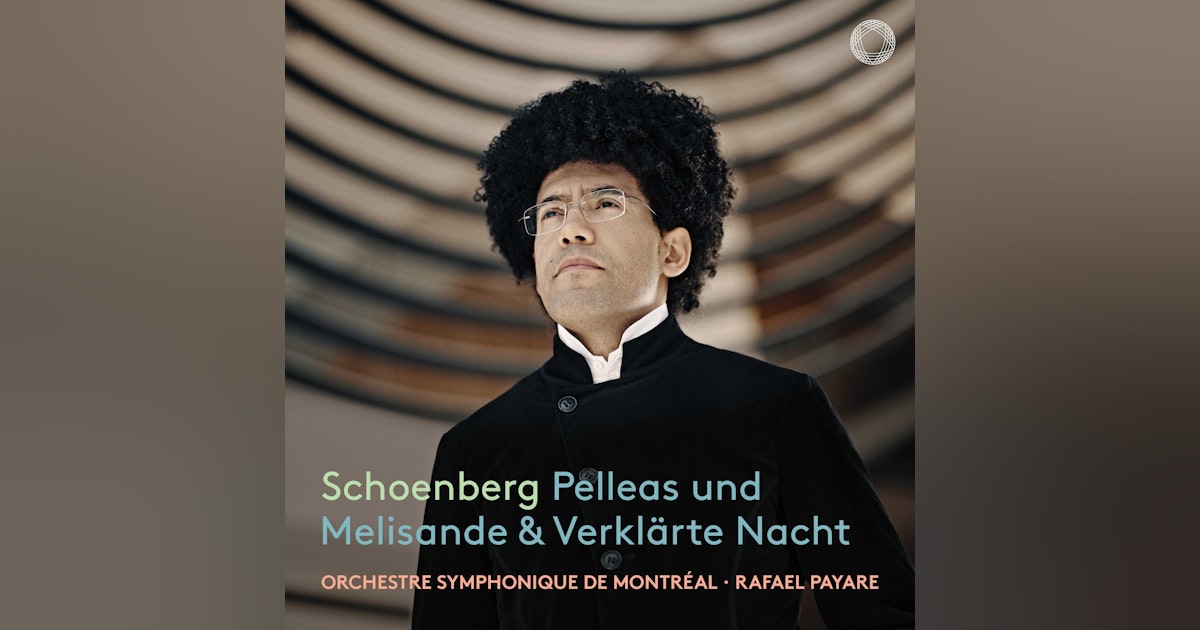Arnold Schönberg's lushest works: the OSM triumphs
Another Pentatone triumph: the OSM at the height of their powers under their dynamic Music Director

For many, Arnold Schönberg is, pardon the niche family-basd pun, a no-no. His rigour, his new system of dodecaphonic (twelve-tone rows) offers challenges for sure; but before that, his late-Romantic lushness is captivating.
This release comes in celebration of what should be known as "Schoenberg 150". Both Pelleaus und Melisande (as opposed to Pelléas et Mélisande: see the Fauré music recently reviewed here and of course Debussy's opera) and Verklärte Nacht (Transfigured Night) deal with the darker aspects of love and forgiveness.
Schönberg (we should really keep the Umlaut at the than the exploded "oe" as these are early works when he was in Europe) was a real seeker ere, he explored the limits of Romanticism itself, before he went on to tear it to shreds. Listen to this, the "Awakening of love" when Melisande sees Pelleas:
The one thing the piece does not need, though, is an undifferentiated mush of sound. Rafael Payare is more than aware of this - the only other conductor I can align this performance with is Pierre Boulez (I remember a phenomenal performance conducted by Boulez at the Barbican - Pollini had played in the first half, and sat near us in the auditorium in the second, following the performance with the score!).
Listen to the sheer detail Payare finds in "Scene from the Vaults - Melisande's hair", and how exciting the ensuing outburst is after the initial delicacy, and yet no semiquaver is lost in the process:
The sheen on the violins high up in their register is remarkable, as is their unanimity: Payare has honed the OSM into a magnificent orchestra. Their wind section is supremely emotive, the brass a magnificent unit, the strings as lush as any. The Pentatone recording, too, is top notch (overseen by Martin Sauer of Teldex Studio, Berlin).
The fourth section of the work is its darkest, as it leads to Melisande's death chamber. Gestures take on an Expessionist sense of desperation:
The only word for Melisande's death chamber, surely, is harrowing its lead-in (on cor anglais) perfectly judged :
Another aspect is the tension inherent in the intervallic structure of chords is superbly judged: you can hear that in the descending woodwind chords of Melisande's death chambering above. The Epilogue is late Romanticism writ large, with moments that hint at Expessionsit. Payare finds the quixotic balance perfectly:
In many ways, Payare takes the best of Boulez (the X-ray detail) and combines it with a more overt emotion, which is surely the ideal combination.
The more familiar Verklärte Nacht (on a poem by Dehmel) is a miracl. The music it seems is not phrased - instead, it seems to breathe, to inhale and exhale like a living entity. Drama, and dramatic narrative, is superbly honoured. There is a heaviness here, but it is not an all-consuming one.And what a boon to have high violins that sound not even a tad strained in Schoenberg's demands, so the melodic ac just continues. Here's the "grave" section at the opening (around six and a half minutes). I'mm adding the second section (from "Molto rallentando") as the music's harmonic arrival (and hearing how it is achieved!) is important:
Payare always seems to keep the whole picture in mind - and her, that means the final sections (Poco adagio and Adagio, Molto tranquillo) offer the perfect close, enigmatic, perfumed, glorious in their ambiguity:
The booklet features art by Schoenberg, and photos of the composer - it feels like we get the whole deal here. Another Pentatone triumph: the OSM at the height of their powers under their dynamic Music Director.
The disc is available at Amazon here. Streaming below.


